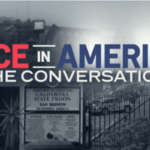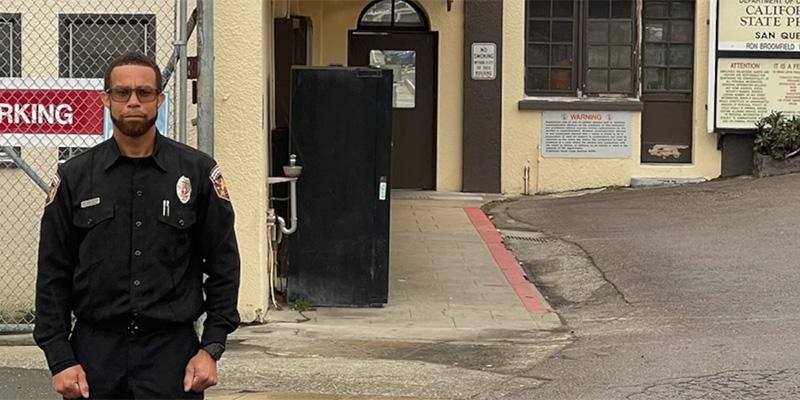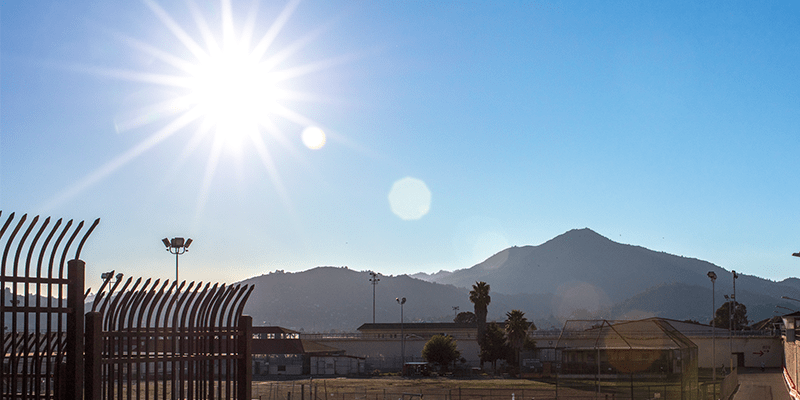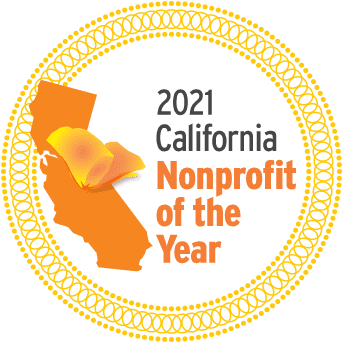The following paper, “Imagining Incarcerated Students,” was given by Jody Lewen at the Symposium on Transformative Education in Prison and Beyond at the University of Wyoming March 29-30, 2019.
The topic of this paper is how incarcerated students are imagined within the field of higher education in prison. I am specifically interested here in how this issue plays out in the context of teaching and learning.
My central purpose is to issue a kind of call for self-reflection about these issues within this community, of higher education in prison—in fact I think we should be aiming to create a culture of continual self-reflection about all matters of imagination and representation in our work. We should be asking ourselves constantly, how the ways in which we imagine our students impacts our ability to serve them well.
To be clear: I don’t believe there are any right answers here—there’s no one truth about incarcerated students, so there certainly cannot be any one right way to imagine them. But what I want to call for here is a kind of perceptive vigilance—I think we need to be constantly paying attention to the question of to what extent we are fully seeing our students, or to what extent we believe that we already know them, or know about them. In other words, to what extent stereotypes inform or even direct our work.
This is a stunningly complicated space, in a representational sense, and I think the best we can do is proceed with caution, openness and humility, and simply be committed to maximizing the good we do, and minimizing the harm.
To start out, I just want to share a bit about how I came to some of these questions: I started out as a teacher in the college program at San Quentin in 1999 I was in graduate school at the time and I started running the program in 2000. One of the first times I ever noticed explicitly how I was imagining incarcerated students was when I walked through the gates of the prison for the very first time. The thought that went through my mind—as if spoken out loud—was, “I’m going to die now.”
That anxiety abated when we got over to the education building, and I actually met the students. They were so friendly and clearly excited about the start of the new semester that I completely relaxed. But I do remember a sense of surprise. It was only when I met them and saw how polite and friendly everyone was, that I realized I’d been expecting some amount of discomfort, or even lecherous energy in the room. As I was leaving the prison at the end of the night, and walked back through that same gate, I remembered that moment of terror.
It struck me later that in the weeks leading up to the start of the semester, I had not felt anxious—I was mostly just excited. And in retrospect I realize that that actually pointed to another issue: I was afraid, but until the pressure of that moment of walking in, my very bold, political and compassionate mind would never have allowed me to register a conscious fear of my students.
I share all of that not just to introduce some very common experiences related to teaching in prison, but also to point out the obstacles that we sometimes face to really accessing the answer to the question of how we imagine incarcerated students: some of what we think or feel may seem morally or politically unacceptable to us, and so we may just block it out and lose access to it.
I would suggest that this (what some might call repression) does not mean that those imaginings do not impact us; rather, they simply become a lot harder to trace, to reckon with, and thus to manage constructively. This is also why I think it’s so important that we as a professional community create spaces in which it is possible to think and communicate candidly, and without judgment. We need to be able to hear and communicate our own thoughts, so that we can really begin to sort them out.
Once I started teaching at San Quentin I certainly talked about my students a lot, but when I began to run the program in 2000, the range of contexts in which I talked about them quickly expanded: recruiting and training teachers, talking to journalists or researchers, and above all, when fundraising, I found myself constantly describing, and essentially advocating on behalf of students.
And it was odd in many ways; I’m sure many people here are familiar with this experience: just as I was falling in love with the experience of teaching inside, I was constantly interacting with people who held all kinds of negative stereotypes about people in prison: People assumed that they were dangerous, unpleasant, predatory; not very smart; lacking in empathy, and entirely unrepentant for the harm they’d done.
In conversation, my response was almost always to share about my experiences inside. I would talk about how nice, smart, and intellectually curious students in the program were were; how often extreme personal hardship (poverty, abuse, lack of education, lack of job opportunities, addiction, etc.) played some kind of role in their crimes. I also talked a lot about how grateful they were for the opportunity to be in school.
At some point I also began to notice how these interactions were rather like a game of stereotype ping pong: people would lob their negative assumptions at me, and I’d lob positive ones back. I also began to notice was how hard it was not to simply counter stereotypes with other stereotypes. People working in this space are constantly on the representational defensive, and we often cope with the barrage of skepticism not just by listing specific contrary characteristics, but by constructing alternative narratives as well.
Others tell us stories about the harm [that they at least imagine that] our students have done; in response, we tell positive, uplifting stories—about the growing and changing they’ve done; the impact of education on their lives… Clearly this is an effort not only to shed light, and to bring greater accuracy or at least nuance to the picture, but also to make those students more sympathetic, more relatable.
But one of the things I began to think about, over years, was all the editing I was doing—the things I would leave out—the characters or stories I wasn’t sharing—primarily because I didn’t want to reinforce a certain stereotype, or even scare people away from the work. As I got involved in things like creating a newsletter, or writing grant proposals, I began to really experience how intense that pressure can be to generate “uplifting” narratives.
As an organization today, we try hard to challenge ourselves to generate portraits of our students that are more complex and nuanced than just “poster children” and “success stories.” But the problem is, of course, that the general public often only seems capable of imagining incarcerated people (and certain other categories of people) as a kind of monolithic homogenous mass. It can only be black or white.
So the pattern in the field of creating alternative stereotypes (above all, of the “rehabilitated criminal”) is, to a large extent, a kind of attempt to, in a cognitive and political sense, “meet people where they are”—in other words, offer images that will fit into their black and white thinking, but still allow space for the possibility that people in prison are something other than pure evil.
But I want to raise the question of whether there might also be other meanings or functions of these intensely idealized and simplistic images of “good incarcerated people.” I wonder if we ourselves might also be struggling to imagine incarcerated people as unique and ordinary human beings. I wonder whether part of what’s happening here is that the stories we share with the outside world might also communicate something about how we want or need them to be.
I wonder whether how we imagine students allows us to imagine ourselves in a particular way. Is there a version of our students that makes us more the people we long to be, or perhaps fear that we are not enough of? I think the question is worth asking because it’s when desire leads perception that we are at the greatest risk of distorting, obscuring through projection, or in some sense simply erasing the other.
With this suspicion in mind—this question, of to what extent our desire might shape our perception of our incarcerated students—I’d like to sketch out a few themes that I find to be especially common in the ways in which incarcerated students are imagined (and represented) by people who work in this space.
But before that, I just want to point out an issue that I consider foundational to this whole realm, and that is, the way in which incarcerated people—also known as Prisoners, Criminals, Bad People—are generally imagined as an abstraction, something surreal or otherworldly, like a work of fiction. Whatever characteristics we may project onto them, I would argue that they are, in our imaginations, not fully actual people. In the negative version of this, they’re not just bad; they’re literally the embodiment of evil, which is itself imagined as a kind of supernatural force.
And yet even more confusing is the fact that while most people think of them as frightening, at times they also have a certain fascination, as if the thought of contact with them were both scary and exhilarating. (Hence an entire popular culture that’s organized around a fascination with crime and violence.)
One minor illustration of this not-fully realness: I was once talking to a group of undergraduate students at Berkeley about our work, and in the discussion, one of the students suddenly said, “It’s weird, I can’t stop imagining them in cartoon. I can’t imagine them as ordinary people.” I think what had happened was that I was probably talking about them as ordinary people, and he registered the internal cognitive conflict, or dissonance.
This otherworldliness also fits nicely with the place of the prison: in an imaginary sense, the prison stands in for that preternatural galaxy that they supposedly come from. You see this even in the language we use to refer to the place of the prison—we talk as if the prison were not in the world, not part of the society—it’s a place where people become not just invisible but socially, politically and morally irrelevant, where their lives are believed to have no meaning or value.
This is of course the essence of dehumanization, and what makes the lives of certain human beings so precarious: it’s that moment when a person’s existence in the realm of the human has been withdrawn or suspended by the larger group.
A minor, fairly innocuous example of this larger effect arose a conversation I just had a few weeks ago with a person who’d visited SQ a few days earlier. She was explaining how exciting the visit had been for her, and said, with great animation: “I’d never talked to a Prisoner before.” I understood that that was literally true, but something about the way she said it made it sound like she had been in the same room with exotic sea creatures.
If prisoners are abstractions, if they are not fully human in a normal sense, this may be partly why we have such a hard time conceiving of them as individuals, and it may also be part of what makes them so vulnerable to projection.
Here I want to come back to my stated intention (before that giant digression) to sketch out a few themes that I find to be especially common in the ways in which incarcerated students are imagined. One important theme in the representation of incarcerated students is that of emotional vulnerability and trauma. I find this topic especially complicated because of course, as human beings they are emotionally vulnerable—and certainly anyone who’s been incarcerated has, by definition, been traumatized. And as far as I can tell, the vast majority of people who are incarcerated were traumatized long before they got to prison—often chronically, over the course of their lives. (The same seems to be true of many people who work inside the system.)
But what I want to call attention to is the meaning of such narratives to the outsider. And again, there are sound reasons for highlighting these issues—the public urgently needs to understand the psychological context for much of what we know as crime—especially violent crime. But I still want us to reflect on the significance of this theme for those working in this field. This may be wildly unfamiliar to folks here—maybe this is some weird California thing—but I see people becoming fixated on those characteristics—almost as if the traumatized person were an object of fascination, or even desire.
To some extent it reminds me of the near-fetishization of firefighters after 9/11; or the public fascination with testimonials from survivors of sexual assault. Someone referred to it as trauma porn. I see something like this manifesting in this field: Teachers turning entire English composition classes into autobiographical writing classes; people without any formal clinical training or support creating their own “trauma narratives” curriculum.
I’m not sure what if anything the connection is, but one of the things one often hears about in outsider accounts of students who are also trauma survivors, is their deep attachment and gratitude towards their teachers. Because of course, people who have been exposed to extreme violence, neglect and abuse, are likely to have a strong reaction to a benevolent authority figure who clearly cares about them and wants to help. This is a huge issue: the context in which our work takes place frequently causes us to appear as saviors or godsends. I wonder if part of what’s compelling here is not just the abstract idea of that person, but the way the entire dynamic causes us to feel—intensely special, valued, and recognized. I will come back to this.
Another common and recurrent theme in the representation of incarcerated students is as victims of social or economic inequality, systemic racism, or other forms of structural or institutional oppression. In some cases, the student is imagined as a revolutionary or radical intellectual, engaged in a political battle against repression.
Just to be clear: I know a lot of people inside the system who fit this characterization quite nicely—once again, my point is not whether or not it’s accurate; my point is to call attention to 1) the ways in which it’s appealing to imagine students in this way; 2) what function it might have for us to imagine or represent them like this; and 3) what the impact of this might be on how we teach, or run programs inside.
People frequently seem to come to this work with pre-existing images, narratives, interpretations, maybe even fantasies, about students. These images and ideas that they bring with them (or that perhaps evolve once they get there) often seem to carry special personal meaning—or even to be a large part of what attracts them, and even energizes them in their work. So many people seem to arrive at this work with their own scripts in tow, as if they were looking for others to help act them out.
Whether they simply project these images onto their students, or come in searching for those who’ll be a “match,” when they find those individuals, those are the ones who become their “favorites”: the people they notice the most, have the strongest connection with, and invest the greatest time and attention in. It’s as if those are the folks they’re really there for—other students are more like background to these “special relationships.”
This is (hopefully obviously) a problem—particularly for all the students who DON’T fit this mold—because both as teachers and as entire programs, we are actually supposed to be there for ALL of our students. One thing we ought constantly to ask ourselves is what it feels like to be those students who are apparently less appealing to us. We also ought to wonder what image of us, both as people and as professionals, this kind of behavior pattern communicates to others, and how it impacts our legitimacy in the eyes of our students.
One way of thinking about the function of all of these dynamics is to consider the ways in which each of these images basically maps to a corresponding role or image for that teacher/practitioner who stands in relation to them. For example: if the student is intellectually or morally inferior, then I must be superior. If the student is broken or lost; then I become the one who can fix or rescue them. If the student is a revolutionary and a martyr; then I am the radical co-conspirator who supports them in battle. If the prisoner is exotic and supernatural, and we’re friends, then I must be cool. So in other words, by existing in relationship to that person, or that image, we’re allowed to construct an image of ourselves that is intensely gratifying, in a narcissistic sense.
I would argue that this theme of gratification—which is clearly, at healthy levels, a feature of any highly functional educational environment—can become especially intense in a classroom setting in which students are particularly attentive and grateful, as they often are in a prison classroom. It’s easy to love people who love you. The gratitude, attention, idealization, even love that incarcerated students often shower on program staff and faculty can just feel really good (even when they can also be quite complicated).
And at the same time, incarcerated students often have an extraordinary amount of undeveloped and unrecognized potential (unrecognized not just by others, but also by them), which once activated is almost like watching one of those national geographic specials where you watch a flower blooming in fast motion. At least for me, it’s not just the emergence of intellect and creativity that’s so wondrous; it’s also witnessing students encounter those parts of themselves that’s so powerful. This is all intensely gratifying for everyone.
If you consider the extreme forms of distress that any incarcerated student lives with, and the fact that so many people inside have had such limited contact with benevolent authority figures, competent teachers, etc., and how all of that magnifies the intensity of those emotions—especially of gratitude and admiration… for anyone who wants to feel valued, teaching in prison is basically heroin.
And I would argue that teachers and staff sometimes, perhaps ironically, develop a kind of addictive relationship to the love of their students. It can be literally intoxicating, and it often creates a kind of reciprocal idealization that while for the most part just creates a very warm and positive energy within the program, and inspires people to work ridiculously hard, at times can also be problematic.
If a teacher’s commitment to their student is rooted largely in their idealization of that student, it can bake into the relationship a kind of precarity or instability. Eventually, someone’s going to struggle—there will be some kind of perfectly normal conflict—maybe just a bad mood, or a conflict in needs or interests—and that rupture or tension will be unduly personalized, or even experienced as abandonment or betrayal.
The same risk applies if the teacher is relying on their students’ idealization of them—or even just their love—to feel like a good teacher, or a good person. Or, for example, if the teacher is looking to their students for some sort of political affirmation or even absolution, perhaps of their own self-perceived sins of privilege…
Teachers need to be able to maintain a sense of their own competency (or even integrity, in an egoic sense), even in the face of conflict—even when they screw up. It cannot be the end of the world when your students are upset or disappointed. Teachers must be able to hold their ground—whether it’s about the quantity of reading assigned, or disagreements about language, politics, or anything else. That doesn’t mean they can’t ever learn from their students, or discover that they were wrong about something—just that they should not be so dependent on their students’ approval that it prevents them from actually fulfilling the role of teacher.
And teachers also need to be able to allow students in an intellectual and emotional sense to be separate, imperfect, even rebellious. And they need to be able to actually see their students. If I hold an idealized image of you, or project one onto you, I’m not actually seeing you—at best, I’m sort of editing you all the time. And while this may feel good in the moment, in a sense, it’s a kind of erasure. And given that students rely on their teachers to let them know that they have value, and that they make sense, even when they’re not pleasing or agreeing with them, then teachers need to be grounded in, and motivated in their work, by something other than their students’ adoration.
As students discover their own minds, their own imaginations, their own critical insights, what they need is teachers and peers who can listen closely, help them hear themselves, and help them discover their own opinions, values and ideas. The teacher who already has in mind who they believe or need their student to be, or what they need them to think, or to desire, is ill-equipped to support their intellectual or emotional development.
In contrast to all of this, it’s a lot easer to imagine the harm of typically negative stereotypes, but I’m going to talk briefly about these. For example, it’s not hard to imagine that it would be damaging to have a teacher who assumes you are physically dangerous, psychologically pathological, intellectually inferior, or morally defective.
Consider what kinds of messages this sort of mindset transmits to the incarcerated student about themselves, whether through interpersonal interaction, for example, in the course of a classroom discussion; or in the way courses are designed, or in response to students’ work—for example, in feedback on papers. And on a practical level, if a teacher thinks their students are fragile or simply not very bright, what motivation do they have to find ways to hold those students—and themselves—to a high standard academically, especially when those students struggle?
Digression/story: shortly after I started running the San Quentin program, I held a series of conversations with fellow instructors about the academic standards of the program. At one of them, when I explained that I felt we needed to get clear about whether or not we were holding our students at SQ to the same standard that we held our students on our main campuses (UCB, Stanford, SF State, etc.), one of the teachers there got very upset and said, this is just unfair. Their lives have been so difficult already; you’re just going to demoralize them.
One important issue that this exchange captures for me in retrospect is how bias can turn a teacher completely upside down, so that what is both ethical and reasonable (in this case, holding students to a high standard) appears to them to be both irrational and cruel. In other words, she didn’t think they were capable of meeting those standards, so holding them to them seemed just mean.
One of the great ironies of that situation is that, as I understand it today, really the problem was that our students were terribly underprepared and inexperienced academically; they were not incapable; they just hadn’t had access to the quantity and quality of basic instruction that they needed. And we, at the time, were a bunch of academics who knew little or nothing about teaching basic skills, and there was hardly anyone involved with the program who was capable of putting together a strong developmental English or math class. So in other words, it was a structural failure on our part. It had nothing to do with their abilities anyway!
And if you think about it, that whole encounter also expressed a very curious interpretation of the spectrum of harm we were facing—somehow, our failure to take responsibility for ensuring that our students got the same quality education they would have gotten at a high quality college on the outside, so that they would be prepared for academic and professional success, that failure seemed less harmful than challenging them academically would be.
I think it also expressed an intense anxiety at the thought of causing the students emotional distress, as if that might destroy them, that I have often encountered in the world of prison education. And this is something else that I think we need to take a close look at. Obviously we want teachers to feel appropriately protective of their students, but I think it’s worth asking what exactly is going on at a moment like this, and what the emotional context is not just for the student, but for the teacher.
Inexperienced students will at times feel overwhelmed: they may be having trouble processing information, they may be anxious, they may be feeling self-doubt, or even panic; they may be flashing back to a time when they were emotionally or cognitively overwhelmed by school; when they were too anxious to think, and teachers or other authority figures were telling them that they were stupid or lazy. Whatever it is, what students need is not for teachers to lower the bar; they need their teachers to stay with them in a psychological sense—the same is true when they experience disappointment or frustration.
Students need teachers whose patience and calm will reassure them that they’re going to be fine; that they’re not going to be rushed, or punished, or humiliated if they struggle. And obviously they need continual academic support.
But again, consider how the teacher’s image of their student might impair their ability to tolerate their student’s frustration, or even anger, or feelings of persecution by the teacher. (Because this is also common; when students get scared they sometimes feel that others are deliberately trying to harm them.) The point is not that students in prison or anywhere else should be allowed to act out in a destructive way, but they should be allowed to have their feelings.
If I as a teacher think you’re inherently emotionally fragile, or are deep down a violent dangerous person, how might that shape my reaction to your showing any sign of anger or frustration? How might it influence the kinds of feedback I offer you, or even impact my grading scale? Or my willingness to interrupt if you’re taking the class discussion completely off track? For that matter, if I think you’re inherently sexist, racist or homophobic, how might that influence my beliefs about the course content you will appreciate, or benefit from, or can handle, whether intellectually or psychologically?
Another brief anecdote: some time before I taught my own class at SQ for the first time, I was chatting with two more experienced instructors about what texts I should teach, and one of them said, “So there are two things you can’t talk about in the prison classroom: one is feminism; the other is homosexuality.” So when I was at SQ a few weeks later, as I was getting ready to introduce my students to The Women of Brewster Place, I told them about that advice. And the students’ reaction was basically, who the hell told you that?
What I believe is that for those two men, my esteemed colleagues, the idea of incarcerated people had come to represent a place onto which they could project all their own repudiated thoughts and feelings. It’s not that WE are anti-feminist or homophobic, but don’t talk to these guys about that stuff…
Another example might seem like the opposite of what I just described: the teacher who idealizes their incarcerated student as, by definition, the embodiment of political radicalism, and thus seeks their approval as a form of psychological validation. This is not the same as simply recognizing a student’s intellectual wisdom or insight; rather, it’s about projecting onto that student the problem of one’s own social (or political) insecurities, and then delegating to them the responsibility of overcoming them. This type of dynamic—in which the student is simultaneously both idealized and instrumentalized as a source of validation—means that the teacher is highly unlikely to hold their ground in any kind of conflict which they fear might lead to the loss of the student’s approval. The intensity of such a relationship might well be deeply satisfying for both parties, but I would argue that it is also nevertheless in a certain sense a form of exploitation.
I cannot overstate the importance of being vigilant about these kinds of projections. The issue is not simply the matter of the teacher’s fantasies about the student, and how these kinds of needs might impair the quality of teacher or staff performance; there’s also the deeply confusing (even if unspoken, or even unthought) impact on the student of the teacher’s attachment to their own fantasy of them, and the burden of their corresponding desire to maintain a certain kind of bond with them.
These dynamics are problematic—though obviously in different ways— both for those students who are the objects of such projections and those who aren’t. But my larger concern is ultimately that while we may see ourselves as political saviors, I fear that we are not so much overcoming reductionist stereotypes, as we are replacing or upgrading them with new patterns of objectification and exploitation. I simply don’t see how we transform the system, or the society as a whole, if our capacity for genuine interpersonal relation remains so deeply impaired.
This is also why I believe that while the somewhat glorifying reductionist stories that I talked about in the beginning may be useful and even necessary at times, they are not going to be enough.
The opposite of dehumanization is not idealization; the opposite is seeing each human being as a fully unique, always flawed individual whose life matters and who is worthy of compassion. If we agree (as I would argue) that the dehumanization of people in prison is the central underpinning of our current catastrophically flawed criminal justice system—and that it is the key factor that both inspires and legitimizes the brutality and neglect contained within it—then we should continue to challenge ourselves, our colleagues and our communities to pay close attention and to forge ahead.











